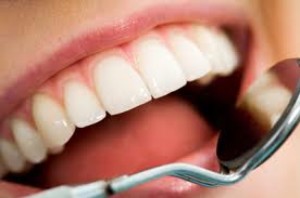 Taree dentist, Nancy Saunders-Clay, has been so distressed by parents unable to afford basic dental procedures for their children she has accepted payments of home-kill and bags of avocados in exchange for treatment.
Taree dentist, Nancy Saunders-Clay, has been so distressed by parents unable to afford basic dental procedures for their children she has accepted payments of home-kill and bags of avocados in exchange for treatment.
“I saw one young girl on the mid-north coast who had an abscess in her tooth and was in a lot of pain” Dr Saunders-Clay said.
“Her father, a farmer, couldn’t afford the treatment so I said I would do it for free.
“The next day he came in with half a cow he’d slaughtered himself. He was too proud not to pay anything at all.”
One man was unable to pay the full cost of a root canal, she said, so he made up the shortfall in avocados.
“About 70 per cent of patients choose the type of treatment they get based on cost alone, so they might choose to have a tooth removed purely because it’s cheaper than saving it” Dr Saunders-Clay said.
About one-third of Australians avoid or delay a visit to the dentist because of the expense, Dr Saunders-Clay said, so the government’s $4 billion dental care package targeting low-income earners, children and people in rural areas was overdue.
The chief executive of the St Vincent de Paul Society, John Falzon, said it was a “scandal” that those groups had been missing out for so long.
“Dental health is sadly a very telling indicator of socio-economic status, and in a rich, wealthy country like ours it is an absolute scandal this should be the case,” Dr Falzon said.
“It impacts on people’s self-confidence and even on their ability to find work.
“I know of people forced to undertake their own dental work due to the fact that they’re absolutely struggling from below the poverty line.”
Some parents were forced to choose between getting their child dental treatment and being able to pay rent, he said.
From 2014, Family Tax Benefit Part A-eligible families with children between the ages of two and 17 can access up to $1000 of dental treatment over two years.
The president of the Australian Dental Association, Shane Fryer, said the long-term health-care savings as a result of that would be significant.
“Achieving optimum oral health as a child holds you in good stead for optimal health as an adult” Dr Fryer said. “Spending $1 dollar on prevention is equal to about $7 in treatment.”
But some said the scheme did not go far enough. Julie-Ann McLoughlin, a teacher, said she and her husband, a police officer, have four children aged between four and nine but do not qualify for the scheme.
“We’re not wealthy by any means, but we just miss out,” Mrs McLoughlin said.
“I think there will still be families who will only be able to afford very basic care.”
(Source: Melissa Davey, SMH, 30 August 2012)
